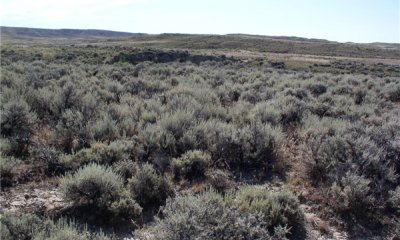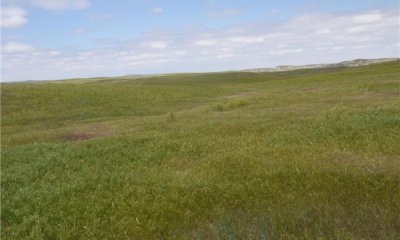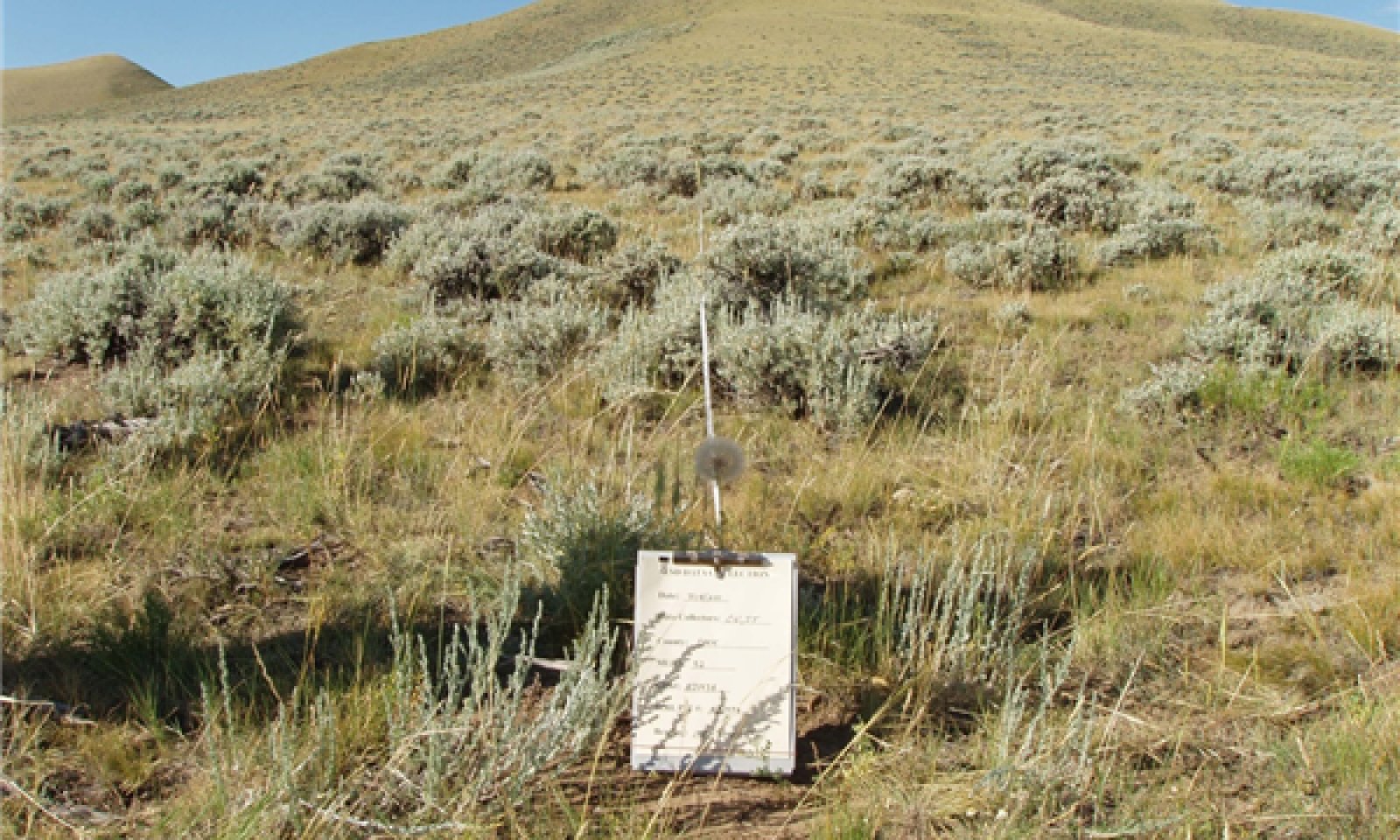
Loamy (Ly) Big Horn Basin Rim
Scenario model
Current ecosystem state
Select a state
Management practices/drivers
Select a transition or restoration pathway
- Transition T1A More details
- Transition T1B More details
- Transition T1C More details
- Transition T2A More details
- Transition T2B More details
- Restoration pathway R3A More details
- Transition T3A More details
- Transition T3B More details
- Transition T4A More details
- Restoration pathway R5A More details
- Transition T6A More details
-
No transition or restoration pathway between the selected states has been described
Target ecosystem state
Select a state
State 1
Reference




Description
The reference state is characterized by the dominance of Wyoming big sagebrush, at 15% or less composition by weight, with a healthy, diverse mixture of Bluebunch wheatgrass, at 20% or less composition by weight with rhizomatous wheatgrasses, Western and Thickspike, as well as Indian ricegrass, Needleandthread, bottlebrush squirreltail, and to a minor extent sod-formers such as Threadleaf sedge and Blue grama.
Submodel
State 2
Sod Bound
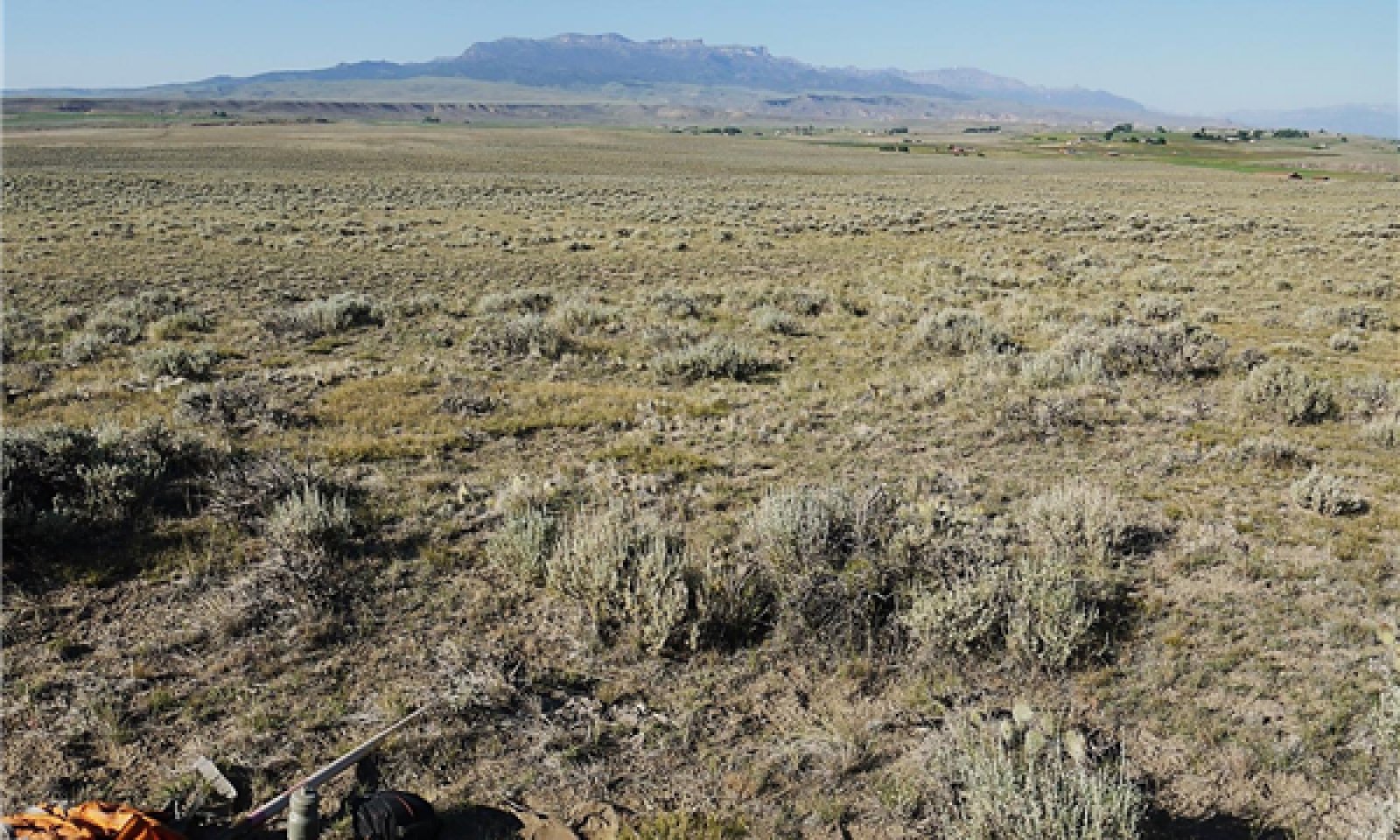


Description
The two dominant sod-forming species that currently exist within this LRU are Blue grama and Threadleaf sedge. Both are species that persist as a component of the perennial vegetation naturally (in reference communities) in the ecological site. The general tendency of these species is to increase under grazing pressure, becoming dominant. The species that gains dominance is unclear. But it appears to be dependent on one or a combination of three specific factors: the specific conditions that forced the transition; underlying soil characteristics for each site; or the species that is more prevalent in the community before the grazing disturbance occurred.
Submodel
Description
Continued high intensity grazing or extended drought can reduce a community to a dominant cover of Wyoming big sagebrush with only small remnant populations of herbaceous cover residing under the canopy of sagebrush. This state can be exacerbated by insects, wildlife, and other human disturbances. Many times the canopy cover does not increase with this community, but the percent production is swayed by the decrease of herbaceous vegetation and the relative stability of woody species.
Risk of wildfire within this state is minimal due to the lack of fine fuels within the understory. Depending on the pattern of use, trailing and other erosional patterns are highly visible in this state. The protection from wildfire can also trend the reference state to this state as sagebrush becomes dense and decadent reducing the ability for the herbaceous component to maintain vigor. As the herbaceous cover declines and then as the sagebrush cover is impacted this state will continue to degrade. There are many stages of this state, but only one clear community.
Submodel
State 4
Invaded Sagebrush
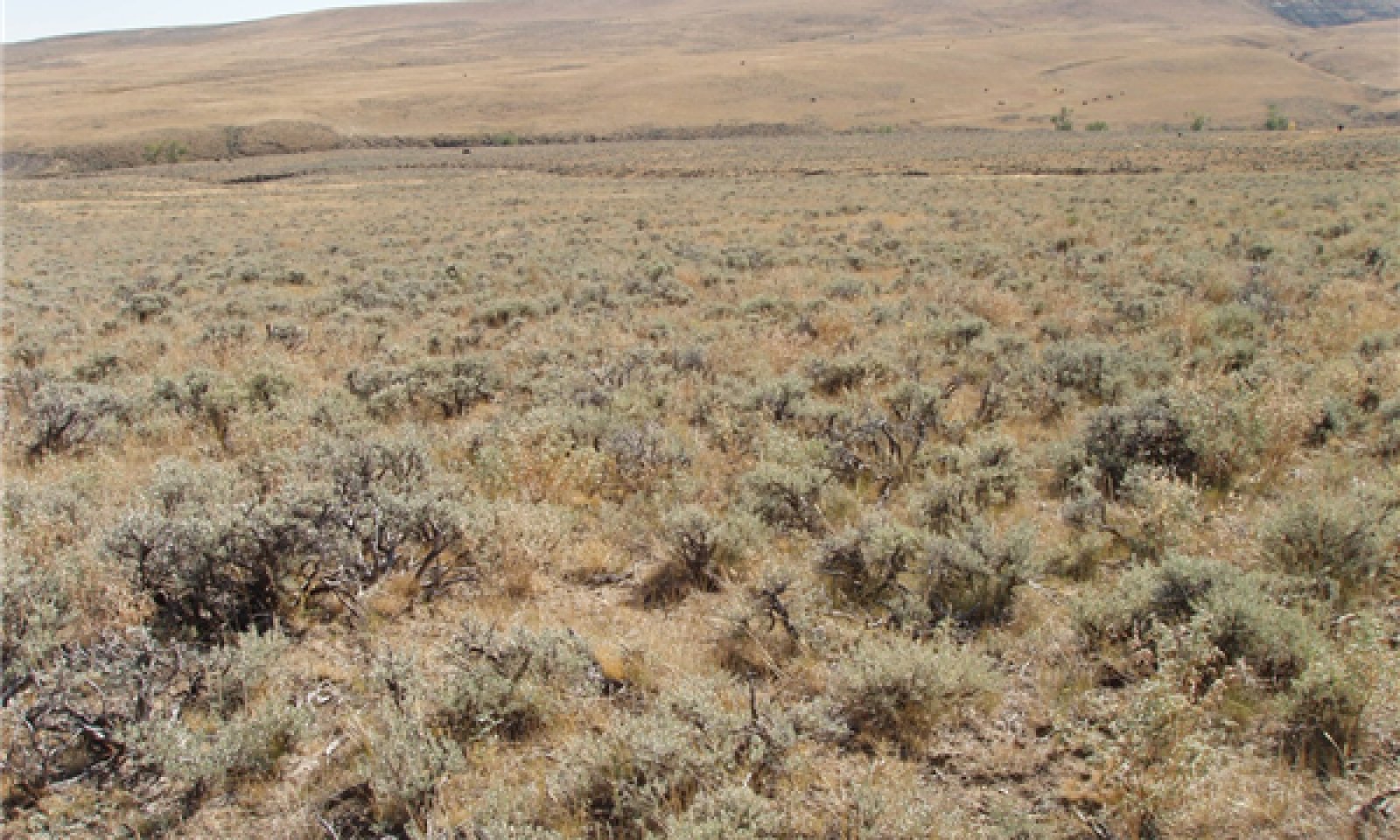


Description
Invasive plant species are a permanent concern with rangelands and rangeland management. Each year new species are discovered and will alter this section as they are identified. Currently within the Big Horn Basin there are several varieties of thistles, knapweeds, milkweeds, mustards and others that create a management issue for livestock and ecology. In areas where there has been a disturbance, natural or man-made, these species can gain a place in the landscape and are difficult to impossible to eradicate. Because of this it becomes a battle to maintain control with annual or prolonged management of the weed species, and preventing further shifts or changes to the native composition.
Submodel
Description
Currently throughout the Big Horn Basin, Cheatgrass or Downy brome (Bromus tectorum) is an annual grass invader that has concerned land managers. Currently there are three other major invader species of forbs that are becoming dominant in areas of the landscape; however, Cheatgrass is the species that is taking large acres of land quickly in this region.
Knapweed, namely spotted; White top or hoary cress, also became dominate in large dense stands and produces their own set of challenging management issues. As more species are found within the Big Horn Basin or as other species become more prevalent in large scale communities, this section will need to shift to meet the concerns of these species. But with the persistence of Cheatgrass and the lack of a successful control agent at this time, it is not conceivable that Cheatgrass will go away or become less of a management challenge.
This state is characterized by the lack of all or most of the shrub component. Extended periods of drought alone or in combination with insect damage or wildfire has removed Wyoming big sagebrush from this community. The competitive nature of annuals, the altered fire regime created by Cheatgrass, and the effect of the loss of the shrub component itself creates an environment that does not support the propagation of new shrub species.
Submodel
Description
The Disturbed or degraded state could be drafted as a stand-alone box within the state and transition model diagram. No matter what state a site originally is ranked in, once the site is mechanically disturbed, or suffers a catastrophic or significant natural disaster that alters the soil properties (erosional, depositional, hydrological or chemical), the site potential is altered. To consider this as an alternate ecological site would not be unreasonable. In some cases (site by site consideration), a re-correlation of a location may be the best solution. But in many cases, the site has not been altered out of the current site, but the potential has shifted enough that it is no longer truly comparable to the reference community. So a dynamic state was captured to detail the altered communities that exist on the landscape.
Submodel
Mechanism
Frequent Grazing (Yearlong), Brush Management or Fire with Drought – With time, or acerbated with drought, severe and frequent grazing of this plant community will reduce the bunchgrasses and wheatgrasses, and will allow the short statured warm-season grasses to become dominant. In some cases, Threadleaf sedge will become dominant, or will be equally competitive in the community. When the Sagebrush component of this community has been affected, by drought or heavy use, or has been removed altogether, this transition has a high probability of occurrence on the landscape. Season of use and intensity of grazing (time and timing) may also have an effect on this transition or may help reduce the risk of this transition.
Mechanism
T1B - Frequent and severe Grazing, No Fire, Drought - will convert the plant community to the Wyoming Big Sagebrush/Bare Ground Plant Community. The probability of this occurring is high. This is especially evident on areas with historically higher precipitation and the sagebrush stand is not adversely impacted by drought or heavy browsing. Drought or shifts in spring precipitation can create this community on locations with a high dominance of Needleandthread. In a normal precipitation pattern, Needleandthread is constant and productive on a reference site. When the spring is cooler or drier than needed for Needleandthread to thrive, the site will have significant reduction in production and show more bare ground or a more open canopy.
Mechanism
Frequent and severe Grazing, Fire, Drought or Insect Damage and Disturbances with a seed source present - The influence of fire and other disturbances in these communities opens the canopy for invaders such as Cheatgrass (Downy brome), thistles, knapweeds, and other invasive species to become established. Drought alone, or if acerbated by fire, will also create the perfect conditions for invasion of the plant community. It has been documented across the Big Horn Basin with trend photos, that as the drought persists, Cheatgrass has increased exponentially each year, starting along roadways or disturbed areas and then radiating out from there.
Mechanism
Drought, Frequent or severe grazing – Drought alone, or with continued high levels of grazing pressure can diminish the vigor and persistence of Blue grama and Threadleaf sedge. With continued stress or pressure, more bare ground is seen in the community and the persisting plants tend to be only under the existing canopy of Wyoming Big Sagebrush.
Mechanism
Fire (wild or prescribed), Brush Management, Drought, Frequent or severe grazing, Disturbance with a seed source - With the loss of vegetative structure, as Wyoming big sagebrush recedes in this community, it intensifies the drought effect on the plants and will assist in opening more bare ground, making the community vulnerable to invasion by annuals and invasive species. By adding further disturbances or a readily available seed source, the risk of transitioning to this state are extreme.
Mechanism
Long Term Prescribed Grazing, Brush Management - In this system, as the brush is managed and the stress on plants is reduced, the dominant plant or seed source will dictate the direction of recovery. In many of these communities the sod forming species are able to persist in the environment and with the increased resource they will be the first to re-establish a site leading to a recovery from bare ground and sagebrush to a sod dominated community, which will take further inputs to transition up to reference.
Relevant conservation practices
| Practice | External resources |
|---|---|
|
Brush Management |
|
|
Prescribed Burning |
|
|
Integrated Pest Management (IPM) |
|
|
Prescribed Grazing |
Mechanism
Frequent or Severe Grazing, Brush Management, Wildfire, Drought, or No Use – Disturbance from grazing or brush management, or fire can open the canopy and provide a seed source for invasive species to establish, such as knapweed, Cheatgrass, and others. No use can also lead to decadence and loss of vigor in the community opening the canopy, leading to a risk from invaders. The amount of bare ground and the lack of perennial grasses lends to a vulnerable plant community.
Mechanism
Fire (wild or prescribed), Brush Management, Drought, Frequent or severe Grazing – When a disturbance decreases and then removes the sagebrush canopy of this site, the perennial grasses and forbs that are established are not able to protect or stabilize the site and it is extremely vulnerable to Cheatgrass invasion, especially following fire and drought, if a seed source is present. With the increased fire frequency as Cheatgrass establishes in a community, it leads to the removal of sagebrush and other shrubs; allowing for a monoculture stand of Cheatgrass.
Mechanism
Fire (wild), Frequent or severe grazing, Drought with Insect Damage / Brush Management. – The threshold species in this system is the Wyoming big sagebrush, which is providing a niche for the perennial natives to persist in the landscape. Once the sagebrush is affected by the altered (shortened) fire frequency of this state due to the invasive species (primarily Cheatgrass), or with the persistence of drought or other environmental stresses such as insects, and frequent or severe grazing, then this niche begins to fade or can be taken rather suddenly in the case of a fire. Once the sagebrush has died back or has been removed by fire it is very difficult to return and may require several years (25 years or greater) to return or may not without outside assistance.
Mechanism
Integrated Pest Management, with Seeding the site to a native mixture - Success is not known to have occurred, and is rated to be low and highly variable for the rate of control of most species. Cheatgrass and knapweeds are two of the most invasive species for many of these sites but there are many others, for example, Halogeton, that can dominate these sites. It is a consensus that the site in theory could be brought to a community that looks similar to an at-risk community within the reference state, but that it is not possible to reach the reference community condition once annuals have established on a site. But this community and the risk of the site will never allow it to react the same to management and environmental change the same as a truly native community and so remains in a reclaimed stated.
Relevant conservation practices
| Practice | External resources |
|---|---|
|
Grazing Land Mechanical Treatment |
|
|
Range Planting |
|
|
Heavy Use Area Protection |
|
|
Integrated Pest Management (IPM) |
|
|
Upland Wildlife Habitat Management |
|
|
Early Successional Habitat Development/Management |
|
|
Native Plant Community Restoration and Management |
|
|
Prescribed Grazing |
|
|
Invasive Plant Species Control |
Mechanism
No Use, Fire (wild or prescribed), Frequent or severe Grazing, Drought with Seed source Present – Extended periods of no use allow plants to become decadent, with a large proportion of dead growth persisting around the crown of the plants; reducing vigor and production. This creates a vulnerability to weed invasions. Frequent or sever grazing or drought as well can open the community to invasion by several weedy species, transitioning the site to an invaded state.
Model keys
Briefcase
Add ecological sites and Major Land Resource Areas to your briefcase by clicking on the briefcase (![]() ) icon wherever it occurs. Drag and drop items to reorder. Cookies are used to store briefcase items between browsing sessions. Because of this, the number of items that can be added to your briefcase is limited, and briefcase items added on one device and browser cannot be accessed from another device or browser. Users who do not wish to place cookies on their devices should not use the briefcase tool. Briefcase cookies serve no other purpose than described here and are deleted whenever browsing history is cleared.
) icon wherever it occurs. Drag and drop items to reorder. Cookies are used to store briefcase items between browsing sessions. Because of this, the number of items that can be added to your briefcase is limited, and briefcase items added on one device and browser cannot be accessed from another device or browser. Users who do not wish to place cookies on their devices should not use the briefcase tool. Briefcase cookies serve no other purpose than described here and are deleted whenever browsing history is cleared.
Ecological sites
Major Land Resource Areas
The Ecosystem Dynamics Interpretive Tool is an information system framework developed by the USDA-ARS Jornada Experimental Range, USDA Natural Resources Conservation Service, and New Mexico State University.


